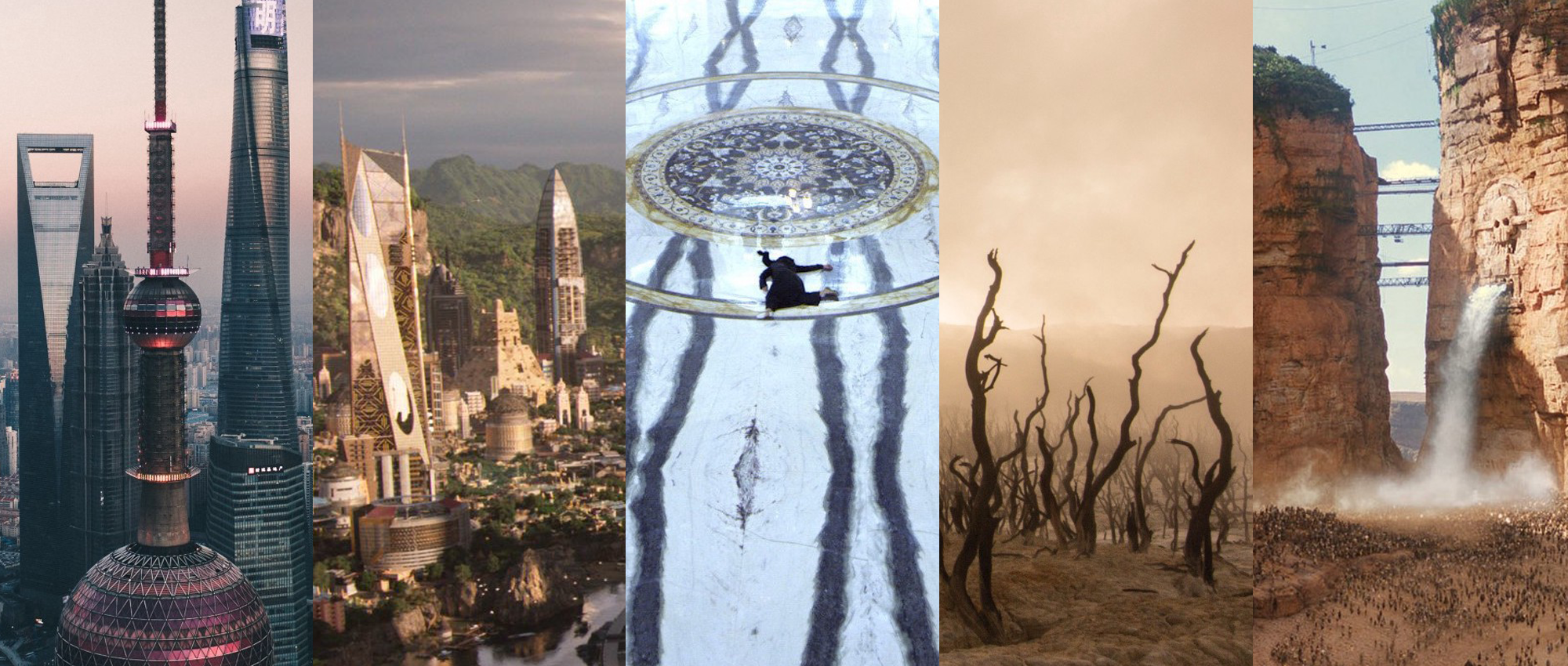
“Cyberpunk” has been the go-to imagery of the future for a startlingly long time–Bruce Bethke’s short story of that name is 35 years old, and Ridley Scott’s Blade Runner was released in 1982. We need some newer words for what’s coming next.
So I punted a question out on Twitter, asking the fans, authors, and futurists I know to share what they saw going on in speculative writing around the world and (often) outside the Anglosphere. These visions are, ultimately, reflections of where people believe the world is headed now, and cyberpunk is not the only vision the world has to offer–indeed, it was never the only one.
Which microgenres are bubbling up, and which trends and themes best describe how creators are imagining the future? Here are nine suggestions.

1. Chinese Sci-Fi and Chaohuan, the “Ultra-Unreal”
A wave of Chinese writing has reached the Anglosphere in the last five or so years–much of it through the sterling translation work of Ken Liu–and has scooped up many of the genre’s big awards.
But why are Chinese and Taiwanese authors writing sci-fi, and why is it hitting home like this? “Realist literature often can’t keep up with the pace of the change that China is undergoing,” Alec Ash, a writer who lives in Beijing, writes in The New York Review of Books. In a 2016 article for New England Review, the writer Ning Ken agrees: “It is as if time in China has been compressed.”
Ning coins the term chaohuan, or “ultra-unreal,” in the same article (available on Lithub under the headline “Modern China Is So Crazy It Needs a New Literary Genre“). He describes chaohuan as a Chinese acceleration of Latin American magical realism: chaohuan seeks to capture a Chinese reality that is often stranger than fiction, and in which “there is nothing you can’t accomplish if you hold power.”
Chaohuan has four characteristics:
- It engages the present and “the social issues that are the hottest topics of the popular discussion of the moment.”
- “It is philosophically speculative,” avoiding direct criticism of the present situation in China and instead trading in paradoxes and uncertainty.
- It “has the quality of a fable or an allegory,” because “one way to give fiction freedom is to maintain its “‘fabulous’ quality.”
- It takes risks with form: the ultra-unreal is a “complex viewpoint,” and this needs to be reflected in the type of writing it produces.
The Western, Anglophone reader may note a certain indirectness to these principles. This is politically necessary. As Isaac Stone Fish notes in a Foreign Policy article about apocalyptic fiction, “in China, it’s far too sensitive for the Communist Party to be criticized, even implicitly.” He quotes the author Liu Cixin, who tells him that, “destroying the world is fine.” Destroying China, on the other hand, is not.
This doesn’t mean that chaohuan is afraid of being provocative. As Ash argues in The New York Review of Books:
The new sci-fi is now in many respects the most biting mode of social and political commentary in China. Long derided and marginalized by China’s literary establishment, it has slipped past the censors who so stringently watch realist fiction. And while much of the genre remains escapist entertainment for the nation’s surplus of engineering students, its more literary practitioners have reclaimed its place at the vanguard of China’s national introspection. They are using it as a Trojan horse to sneak in truths obliquely, offering not feel-good bromides but twisted visions of what modern China has become.
What to read
- Han Song, 2066: Red Star Over America (2000)
Han Song, a journalist for Xinhua News Agency, is reputed to have said that the news pieces he writes in daytime are more “science fictional” than the sci-fi he writes at night–a very chaohuan attitude. In 2066, in a Sinocentric world, a delegation of Go players visits a chaotic and collapsing America reeling from a terrorist attack on the World Trade Center. Any parallels to the Cultural Revolution 100 years earlier are subtle enough to be deniable. - Liu Cixin, The Three-Body Problem (2008, first English edition 2014)
Truly epic–former U.S. president Barack Obama said that it was “fun to read, partly because my day-to-day problems with Congress seem fairly petty.” Set during the Cultural Revolution, the book follows astrophysicist Ye Wenjie, who, in despair at the state of the world, invites aliens to Earth to fix the chaos humanity has sown. This goes as well as you would expect. - Hao Jingfang, Folding Beijing (2012, English edition 2015)
Jingfang won the 2016 Hugo Award for Best Novelette by describing a city so overcrowded that people are stratified into three classes, which are strictly forbidden to mingle. Any resemblance to economic polarization in contemporary Beijing, etc.
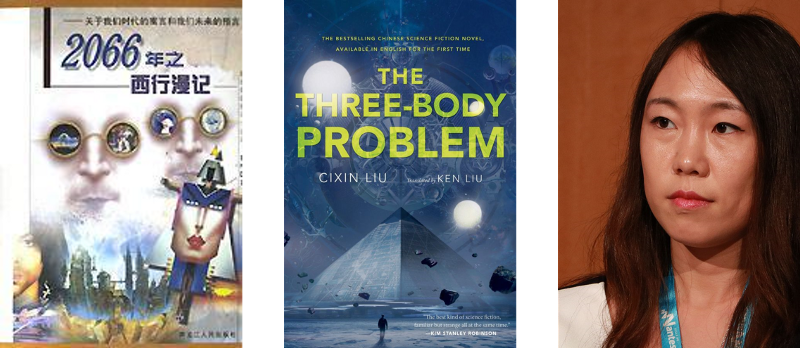
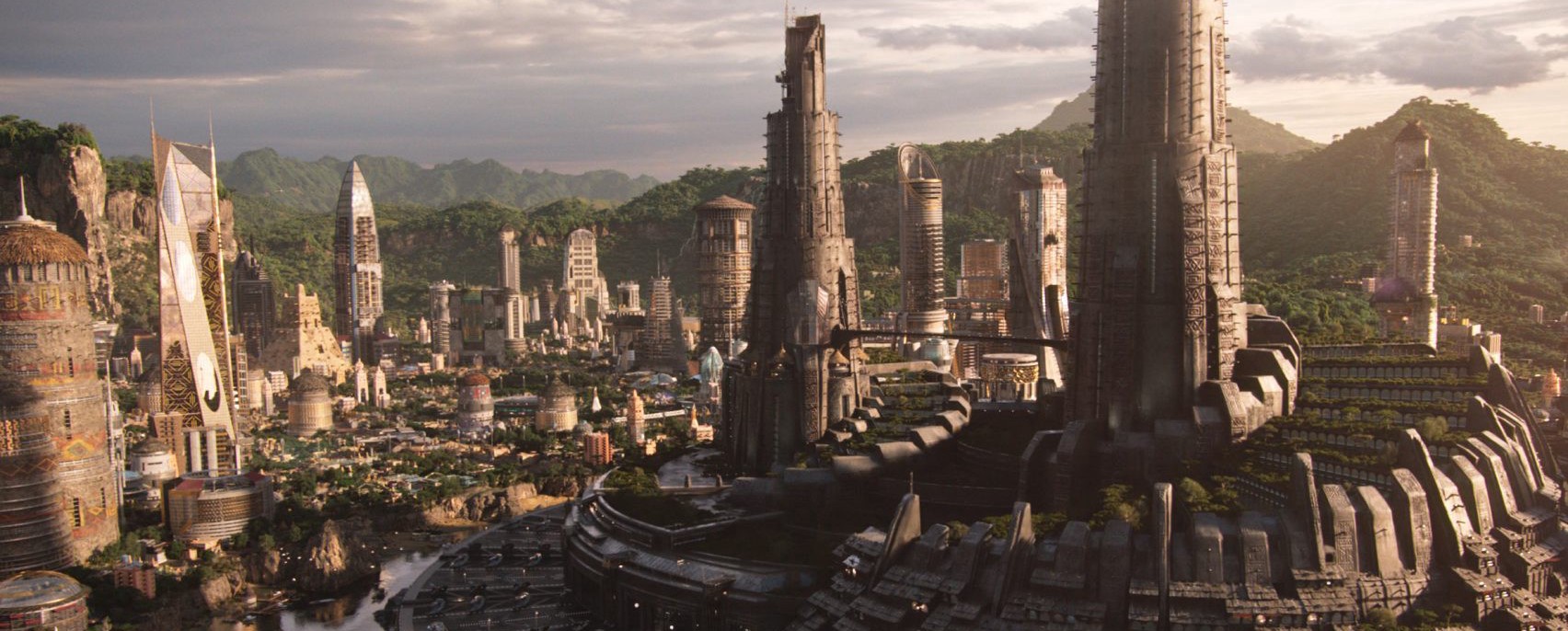
2. Afrofuturism
The genre isn’t in any way new–but after the roaring success of Black Panther (2018), it’s an essential imaginary to highlight nonetheless.
Like the Chinese science fiction mentioned above, Afrofuturism provides a whole new center of gravity for speculative fiction, away from the white Anglocentrism of traditional sci-fi and much cyberpunk. It can be broadly described as the notion that “there are black people in the future,” as Florence Okoye put it for How We Get To Next’s 2016 series on Afrofuturism–but there are specific implications that this is a future built on different cultural terrain than our present. These are worlds centered on African and diasporic history, culture, and cosmologies. Many writers (not least the mother of the genre, Octavia Butler) explore counter-histories, and blend sci-fi with fantasy, to create new imaginary futures–not just for black life today, but for the lives of everyone.
In 2013, Alondra Nelson and Reynaldo Anderson sought to push the definition of the genre forward into “Afrofuturism 2.0.” In “The Black Speculative Art Manifesto,” excerpted here on Next in January, 2016, Anderson wrote:
Future-looking black scholars, artists, and activists are not only reclaiming their right to tell their own stories, but also to critique the European/American white digerati class of their narratives about others, past, present, and future–and challenging their presumed authority to be the sole interpreters of black lives and black futures.
Afrofuturism 2.0 goes far beyond fiction to become a way of looking at science and science studies–as in Nelson’s own major study of the genetic testing industry, The Social Life of DNA: Race, Reparations, and Reconciliation After the Genome. It’s also a way of examining digital humanities, critical theory, and aesthetics. Afrofuturism and its Africanist manifestations “overlap around the speculative and the designed, and interact around the nexus of technology and ethics.”
In February 2016 How We Get To Next published a whole month of articles on this theme–so check these out, especially Florence Okoye’s reading list and music list. Keeping things simple with fiction, though, here are three books worth your attention.
What to read
- N. K. Jemisin, The Fifth Season (2015)
Jemisin has won an extraordinary three Hugo Awards, and has changed the shape of the sci-fi establishment in the process. Start with The Fifth Season, set on a supercontinent called “The Stillness,” which is enduring a “season” of catastrophic climate change. In Jemisin’s 2018 Hugo acceptance speech, she said, “For some of us, things have always been hard, and I wrote the Broken Earth trilogy to speak to that struggle, and what it takes to live, let alone thrive, in a world that seems determined to break you.” - Nisi Shawl, Filter House (2008)
A collection of fourteen short stories interweaving future and fable, African trickster gods and colonial extractionism, dragons and space travel. Ursula K. Le Guin praised the collection’s range, which moves “from the exotic, baroque complexities of “‘At the Huts of Ajala’ to the stark, folktale purity of “‘The Beads of Ku.'” - Nnedi Okorafor, Who Fears Death (2010)
Onyesonwu is a young woman of the oppressed Okeke tribe in a Saharan African world. She has been rejected by her people for being the child of rape–but as she grows into her powers as a sorceress and spirit-traveler, grappling with nature, tradition, history, and love will not only save her life but her people’s, too. Okorafor won the World Fantasy Award with this novel, and it has been optioned by George R. R. Martin for an HBO series.
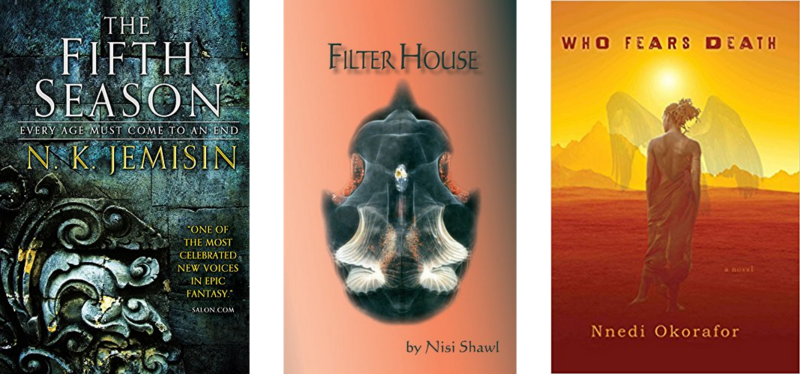

3. Gulf Futurism
A crunchy, contentious concept, referring both to the “hyperdevelopment” aesthetic of architecture in the region (“the Blade Runner fantasies of oil princes,” as Natalie Olah puts it in a 2014 Vice article) and the critique of the same.
Writing for Dazed in 2012, artists Sophia Al-Maria and Fatima Al Qadiri describe how the “themes and ideas of Gulf Futurism emerge: the isolation of individuals via technology, wealth and reactionary Islam, the corrosive elements of consumerism on the soul and industry on the earth, the erasure of history from our memories and our surroundings and finally, our dizzying collective arrival in a future no one was ready for.” Al-Maria’s and Al Qadiri’s own works swirl with imagery of shopping malls, satellite TV, and video games–the stuff of teenage life, a world seen through a screen, always mediated.
Like vaporwave, the mid-2010s musical genre Al Qadiri is also associated with, Gulf futurism has an ambivalent relationship with hypercapitalism–it’s to some extent parodying it, but, ultimately, it’s just mesmerized. Writer and critic Rahel Aima–who prefers the term “Khaleeji futurism,” stressing its Arabness–critiques it for this:
Gulf futurism offers no new imagery to displace the hegemonic ones in power–instead setting up the scaffolding to reproduce the injustices, structural degradation, and racial erasures of the present. As ethnofuturisms go, it feels like there’s something missing, too. Where’s the longing, the displacement, the impossibility of return? Where’s the Afghan, the Filipino, the Indian, the Iranian, the Somali, the Pakistani, the Bangladeshi, the Iraqi, and all the other non-Khaleeji Arabs all bound up into one pathologised brown body? [. . .] At base, Gulf futurism is “plus ça change futurism,” all wrapped up in what a friend has dubbed “flying force fields of neo-Arabness.” [. . .] How can it be sci-fi without social justice?
What to consume
Gulf Futurism hasn’t really produced novels as such. Instead, check out:
- Sophia Al-Maria, The Gaze of Sci-Fi Wahabi (2008)
The book was limited edition, but videos and essays are still up on scifiwahabi.blogspot.com, and are the best resource to get into the project. - Fatima Al Qadiri, Desert Strike EP (2012)
In 1991, Iraq invaded Kuwait and a U.S.-led coalition fought back in Operation Desert Storm. A year later, Al Qadiri bought a copy of the console game Desert Strike: Return to the Gulf, based on the same war she’d just lived through. Time collapsed, reality blurred–and twenty years later, she made a cold, electronic EP synthesizing terror and childhood, war and games, inspired by the militaristic futurism of early grime. - Reza Negarestani, Cyclonopedia: Complicity with Anonymous Materials (2008)
I hadn’t even remembered this was a novel–it’s that strange. Iran isn’t a “Gulf state,” but Al Qadiri and Al-Maria characterize Iranian philosopher Negarestani’s genre-busting speculative history (or theory-fiction) as a related lens on the horror of oil, war machines, and the desert. Extraordinary and brilliant.
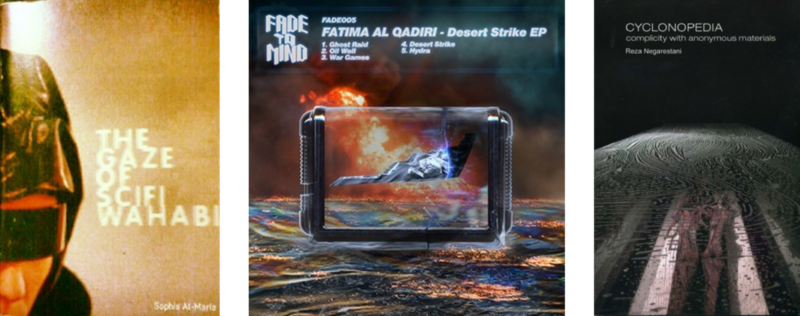
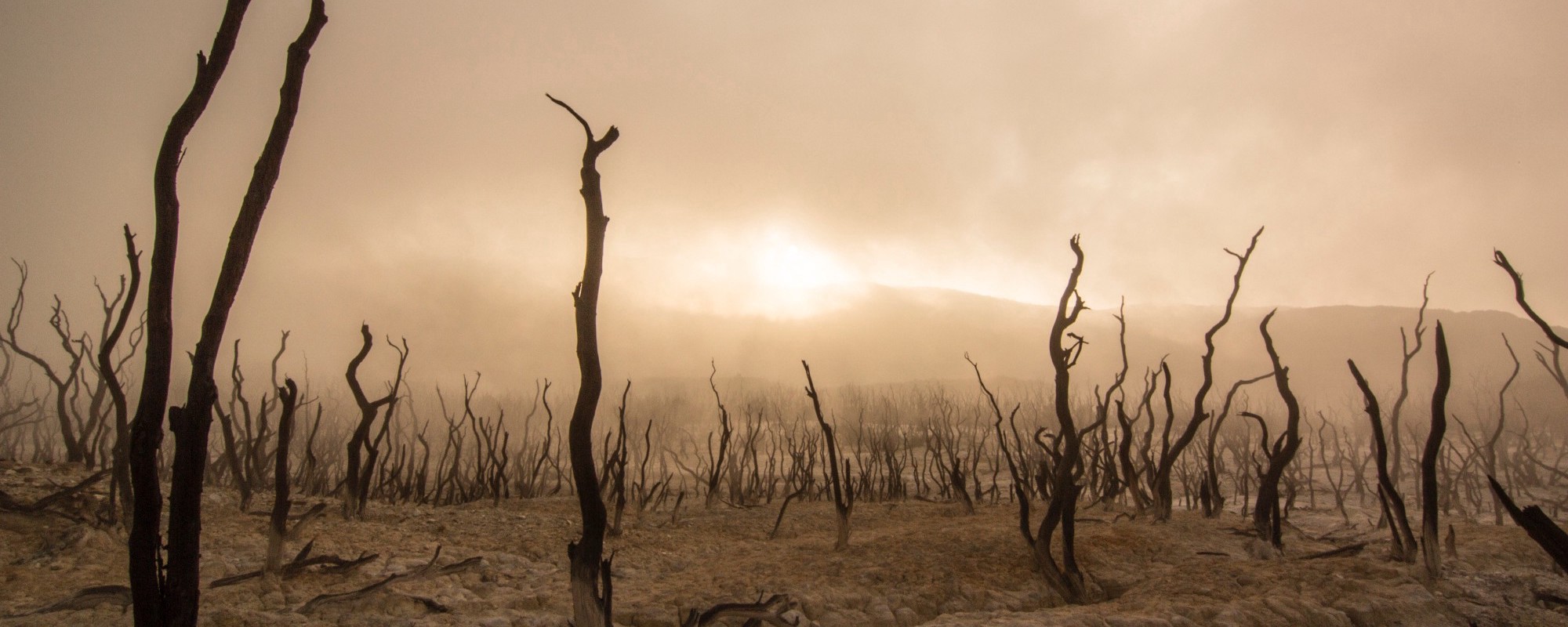
4. Climate Fiction (“Cli-Fi”)
“All novels written now should be climate change novels unless they’re a fantasy in some way. Realist novels that don’t have climate change as part of the contemporary landscape are fantasies, genre novels.”
So says author Jane Rawson, speaking in 2018 to Ben Brooker about Australian literature.
Similarly, media theorist McKenzie Wark has written about the “obsolescence of the bourgeois novel in the Anthropocene.” That is, “climate change exceeds what the form of the bourgeois novel can express.” He recommends “cli-fi” as a genre, though he notes that “it includes some quite terrible books,” such as Ian McEwan’s Solar, in which “the imminent collapse of industrial civilization” is mapped onto that most literary of topics, “a middle-aged white man’s issues with his penis.”
Better options include:
- Margaret Atwood, the MaddAddam trilogy (beginning with Oryx and Crake, published in 2003)
The “Waterless Flood” pandemic has wiped out the human population, and the last man standing, known as Snowman, must go on a journey helped by the Children of Crake, the gentle, genetically engineered new species that has inherited this lush neo-wilderness Earth. - Cormac McCarthy, The Road (2006)
Climate change isn’t actually mentioned in this novel. It’s simply apocalyptic: something has reduced planet Earth to a dead rock in space, and humans–and their humanity–have been terribly destroyed. It’s a book about survival, savagery, and suffering, and the terrible fragility of the veneer of civilization. Author Andrew O’Hagan called it “the first great masterpiece of the globally warmed generation.” The 2009 film adaptation upset me like nothing else I’ve ever watched in my life, and I never, ever want to see it again. - Barbara Kingsolver, Flight Behavior (2012)
“How do we live, Kingsolver asks, and with what consequences, as we hurtle toward the abyss in these times of epic planetary transformation?” writes Dominique Browning, in her review for the New York Times. Restless Tennessee housewife Dellarobia Turnbow finds the valley behind her house filled with millions of monarch butterflies, displaced from their typical overwintering haunts in Mexico. Will they survive the cold Tennessee winter?
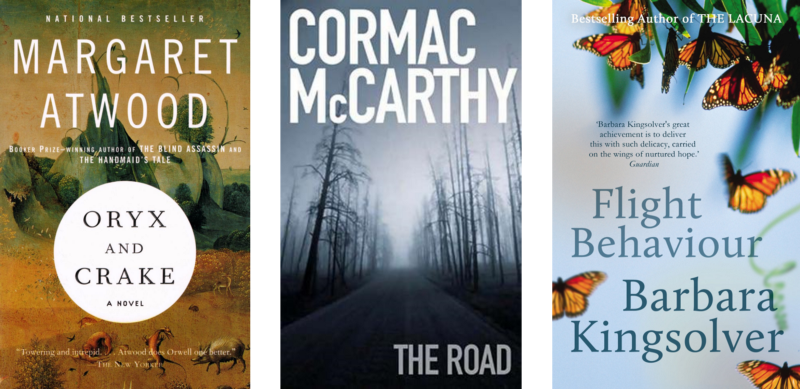

The next two speculative fiction movements are subgenres of cli-fi, but nevertheless fascinating and distinctive enough in their own right to be counted as equal to cli-fi for the purposes of this guide. Let’s start with the unexpectedly optimistic.

5. Solarpunk
“What does “‘the good life’ look like in a steady-state, no-growth, totally sustainable society?”
According to “On The Need for New Futures,” a 2012 article on Solarpunk.net, that’s the question this movement–which melds speculative fiction, art, fashion and eco-activism–seeks to answer. In the same post, Solarpunk’s anonymous founders warn, “We are starved for visions of the future that will sustain us, and give us something to hope for.” Yet what if we dreamed differently? What if we tried to answer a separate question: What does a sustainable civilization look like, and how can we get there?
As Olivia Rosane puts it, what if we tried to “cancel the apocalypse?”
Solarpunk is the opposite of cyberpunk’s nihilism, offering stories, the founders say, about “ingenuity, positive creation, independence, and community.” These narratives are often framed around infrastructure as both a form of resistance and as the foundations for a new way of life–the eponymous solar panels feature heavily.
What to read
- Kim Stanley Robinson, Mars trilogy (beginning with Red Mars,1992)
“I’ve always written utopian science fiction,” says Robinson. He’s one of the best world-builders in contemporary sci-fi, and these stories of terraforming Mars are super worked-through, both technically and sociopolitically. They describe a future in which humans just might be able to achieve ecosystem balance. - Cory Doctorow, Walkaway (2018)
This is far less utopian than Robinson’s work, but perhaps, quietly, just as hopeful. In a world wracked by climate change and fully captured by corporate power, most people live grinding lives of toil in “Default” cities. Yet 3-D printing has created post-scarcity, and so Doctorow’s trio of characters simply secede and walk away into the lands in between, and start to rebuild the world. “The point of Walkaway is the first days of a better nation,” one says. - Check out Sunvault: Stories of Solarpunk and Eco-Speculation (2017, eds. Phoebe Wagner and Brontë Christopher Wieland), the first English-language collection of solarpunk fiction. For stories from Brazil and Portugal, there’s Solarpunk: Ecological and Fantastical Stories in a Sustainable World (2014 / English 2018, ed. Gerson Lodi-Ribeiro).
- Also, medium.com/solarpunks has more essays and interviews.

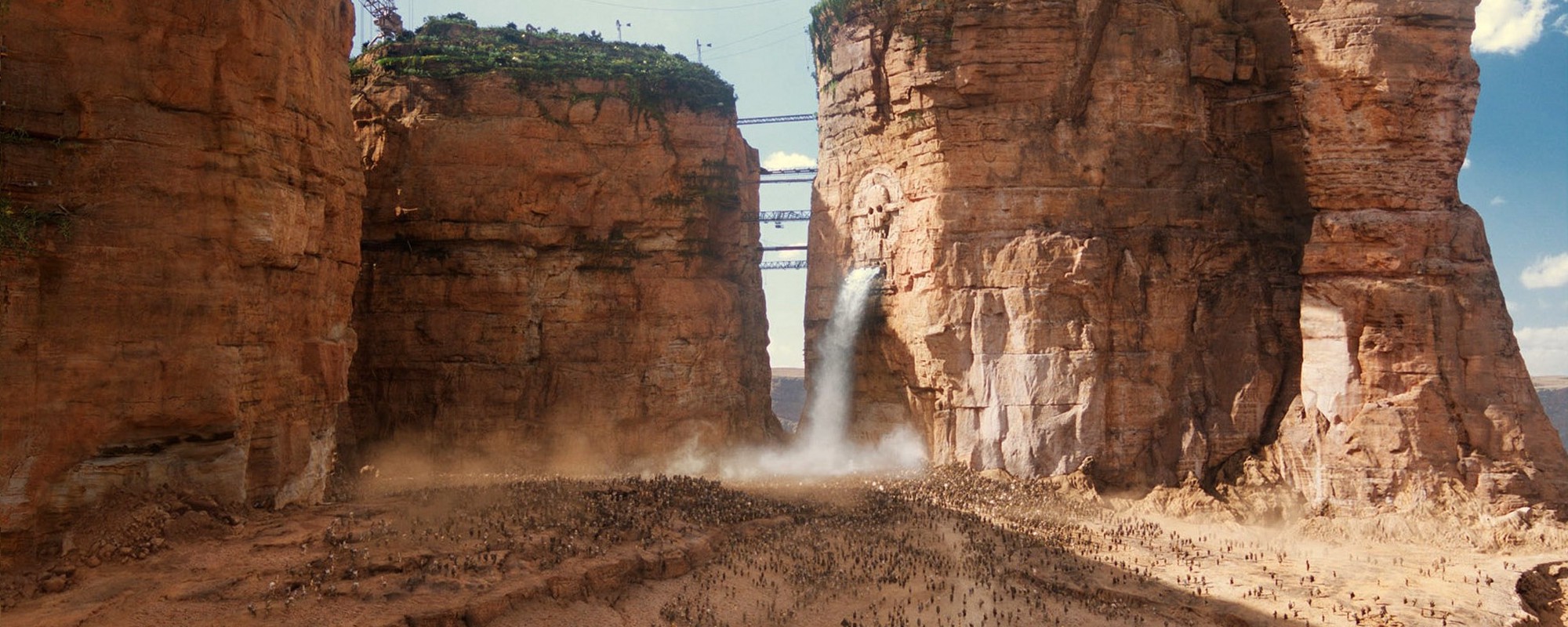
6. Water Crisis Thrillers
If you run out of water, you’ve got just 100 hours left to live, claims Dr. Claude Piantadosi of Duke University. This lends a particular tension to science fiction novels about drought and water crisis.
The scenario they explore is barely a “future” at all. Earlier this year, Cape Town, South Africa, only narrowly averted “Day Zero,” the point when the city’s water reserves would fall to a critical level and officials would have to turn off the supply to four million people. UN Water reports that a third of the world’s biggest groundwater systems are already in distress, and that by 2030, water scarcity in arid and semiarid places will displace up to 700 million people.
A handful of science fiction writers and films are exploring this imminent reality.
What to read
- Claire Vaye Watkins, Gold Fame Citrus (2015)
It hasn’t rained in Los Angeles in years. On the run from vigilantes, Luz, Ray, and a strange child named Ig strike out deep into the sprawling, ever-shifting sands of the Amargosa Dune Sea, chasing rumors of an impossible town and a “prophet” who dowses for water. Strange echoes of the Manson cult appear in this story–Watkins’ parents were swept up in it back in the 1970s. - Paolo Bacigalupi, The Water Knife (2015)
Arizona has become the new Dust Bowl, and drought-wracked Southwestern states have formed militias and closed their borders. Angel Velazquez is an ex-gang member turned “water knife,” running black ops for the corrupt Southern Nevada Water Authority, caught between the corporate interests that are constructing massive luxury resorts and the coyotes who are smuggling people to safety in California. - Benjamin Warner, Thirst (2016)
It’s a sweltering summer day in the suburbs of Washington, D.C., and when Eddie Chapman turns the faucet, no water comes out. All the water everywhere has been used up, and communication and power are knocked out, too. What would you do? How would you survive? No one in this novel really knows, and the characters oscillate between communal desires for mutual aid and an instinctive, panicked drive for self-preservation.
Other classics of this microgenre include J. G. Ballard’s novel The Burning World (1964, later renamed The Drought), as well as the movies Tank Girl (1995) and Mad Max: Fury Road (2015).

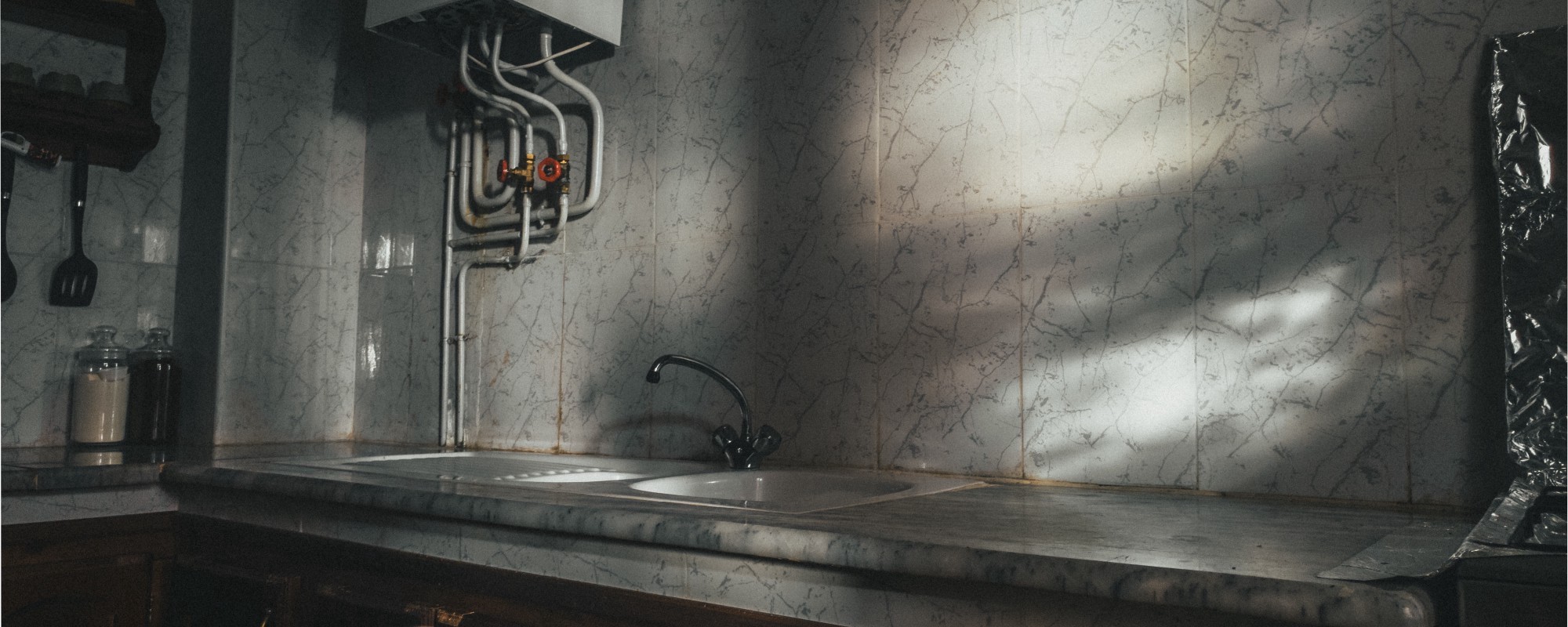
7. Kitchen Sink Dystopia
I think I'd call it "kitchen sink dystopia," in the spirit of English drama from the 60's. That's how I think of it, when I'm doing it. But the "everyday" or "workaday" sentiment is the same.
— Madeline Ashby (@MadelineAshby) September 9, 2018
Think of this microgenre as “minimally speculative futures,” if you like–a mode of storytelling that seems wholly mundane and normal until something goes a bit wrong. Fiction writer Brendan C. Byrne calls it the “day to day debasement of Super Late Capitalism.”
What to read
- Madeline Ashby, “Domestic Violence” (2018)
“I couldn’t get out of the house,” a character says. “The house–well, I mean, the condo–wouldn’t let me out. The door wouldn’t open.” Ashby’s short story about smart home technology being weaponized by abusers was published by Slate three months before the New York Times reported on this topic as factual reality. - Tim Maughan, “Flyover Country” (2016)
Maughan’s story for Vice describes a world of universal basic income and iPhones made in America. At the Foxconn-CCA Joint Correctional and Manufacturing Facility, Miguel replaces the chips in faulty handsets. It’s an elegant, taut story that Jeff Bezos might read for assembly line optimization notes. - Chris McCrudden, Battlestar Suburbia (2018)
In McCrudden’s debut novel, a pleasingly ridiculous take on “kitchen sink dystopia,” machines rule–not as superpowered AIs but as sentient bread makers, Machiavellian smartphones, and a mobile hair salon. Human beings are now the servants of the domestic appliances, good for little more than mopping floors and a bit of flirty dial-fondling. Think The Hitchhiker’s Guide to the Sears Catalogue and you won’t be far wrong.
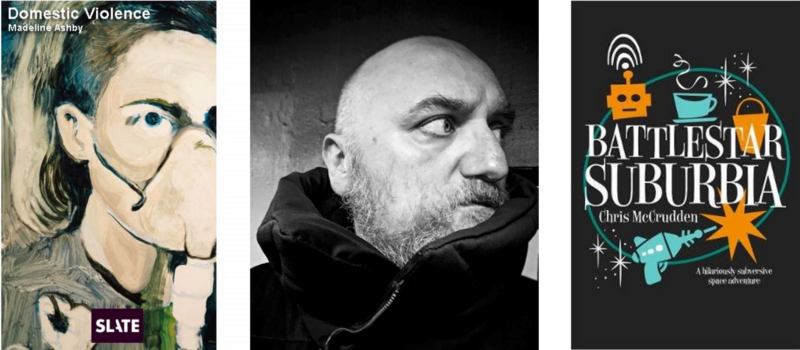

8. Woke Space Opera
A slightly cheeky name here, as suggested by Tim Maughan, author of both Flyover Country and the forthcoming novel Infinite Detail (2019).
At the other end of the scale to kitchen sink dystopias is this microgenre, which features the familiar elements of classic hard sci-fi–faster-than-light space travel, deep futures (like 20,000-years-deep), and, of course, aliens–with a contemporary sociopolitical twist.
Several of the writers we’ve seen already are working at the interstellar scale, including N. K. Jemisin (see â„–2, Afrofuturism, above) with her Broken Earth trilogy, and Kim Stanley Robinson (â„–5, Solarpunk) with 2312.
Three more to read
- Ann Leckie, Ancillary Justice (2013)
The main character is a warship, formerly part of an AI hive mind, who’s on a quest for revenge–so the “hard sci-fi” label might seem fitting. Yet it’s also a feminist book, set in a genderless universe (with default female pronouns), and is filled with questions of identity, selfhood, and free will–which makes it pretty woke, too. Leckie won the Hugo, the Nebula, and the Arthur C. Clarke awards in 2014, becoming the first writer to receive all three for the same book. - James Tiptree Jr., (The pseudonym of Alice Sheldon), Up the Walls of the World (1978) and Brightness Falls from the Air (1985)
Tiptree/Sheldon’s only two novels deal in human telepathy and alien species near extinction–and themes of interspecies care, space-colonial atrocities against indigenous inhabitants, and tragic consequences of unjust socioeconomic systems. - China Miéville, Embassytown (2011)
On the planet Arieka, a colony of humans live next to the Hosts, a species so alien that their language has no capacity for abstraction or lying. Tragically, contact changes this, and the Hosts turn on humanity in the hope of wiping out the source of their corruption. It’s a novel about the Sapir-Whorf hypothesis, the nature of otherness, and the Opium Wars.


9. The New Weird
Time for some tentacles!
It’s not actually new–the name has been around since 2002–but definitely weird. Unlike the other speculative fiction subgenres discussed here, The New Weird draws on supernatural horror as much as on fantasy and sci-fi tropes. Bodies often don’t get to be wholly human: a central character may be a mutated bear, or have a scarab beetle for a head. Plants and fungi tend to be able to do a lot more than plants and fungi are supposed to be able to do. The mood is eerie and uneasy.
Definitive texts
- China Miéville, The Scar (2002)
Miéville’s Perdido Street Station (2000) may have kicked off this whole genre, but to my mind, The Scar is the better read. It’s set on the vast floating pirate city of Armada, amid mosquito-people, walking cacti, criminals punished by being surgically “Remade,” and a fine and disconcerting cast of monsters (from the murderous “grindylow” to the incomprehensible “avanc”). The rulers, known as the Lovers, carve matching scars into each other’s faces–but another gash in space-time awaits as well. - John Langan, The Wide, Carnivorous Sky and Other Monstrous Geographies (2013)
Langan is known as a horror writer–but then again, speculative fiction isn’t just sci-fi. This collection of seven short stories and a novella, “Mother of Stone,” takes classic tropes of vampires, werewolves, and zombies, and turns them upside down and inside out in inventive and thoroughly unnerving ways. - Jeff VanderMeer, Annihilation (2014)
The government science agency sends expeditions into Area X, but they tend to disappear unpleasantly. Annihilation plays on fears of both the real-life Chernobyl nuclear exclusion zone and the radical otherness of nature itself.
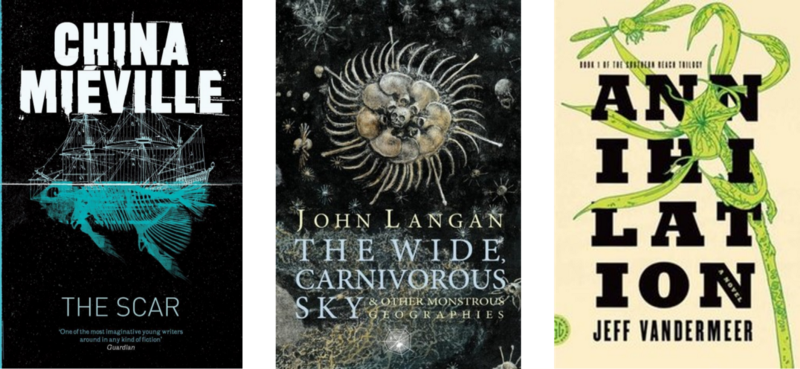

How We Get To Next was a magazine that explored the future of science, technology, and culture from 2014 to 2019. This article is part of our Arts & Culture section, which looks at innovations in human creativity. Click the logo to read more.

